- Home
- Thomas Keneally
Australians, Volume 3
Australians, Volume 3 Read online
Praise for Australians: Eureka to the Diggers
‘. . . written with some gusto, and with glee . . .’
— Geoffrey Blainey, Weekend Australian
‘. . . what this book does is populate the blankness of our collective memory with lots of characters from all parts of the continent and all walks of life.’
— Saturday Age
‘. . . giving us what Australian history has desperately needed for years.’
— Canberra Times
‘This book is just as engaging as the first volume, and once again Keneally proves he charts events skilfully and paints characters with flair.’
— The Week
‘Reading the book is like listening to a witty raconteur.’
— Adelaide Advertiser
Praise for Australians: Origins to Eureka
‘When it comes to writing page-turning narrative no one does it better than Thomas Keneally . . . no doubt about it, Australians is a corker.’
— Cassandra Pybus, Weekend Australian
‘. . . the story of Australia and the Australians could be in no better hands than Keneally’s.’
— West Australian
‘Keneally evokes these distant lives with concrete detail and vivid sympathy . . . his people inhabit the same world we do—we meet them without the hesitation of reaching across voids of space and time.’
— Marian Quartly, Sydney Morning Herald
‘[Australians] will appeal to the general reader and the avid historian alike, and this is only the first volume. This reader can’t wait for the second.’
— Bookseller + Publisher
‘Volume one of Australians builds a sense of historical wonder.’
— Stephen Wilks, Canberra Times
‘This new perspective on Australia’s founding fathers is truly fascinating.’
— Sandy McCutcheon, Courier-Mail
Page 130: Lines from ‘Weevils in the Flour’ by Dorothy Hewett reproduced with permission of the Estate of Dorothy Hewett. Pages 155, 156 and 182: Lines from ‘William Street’, ‘Five Bells’, ‘An Inscription for Dog River’ and ‘Beach Burial’ by Kenneth Slessor from Selected Poems, reproduced with permission of HarperCollins. Pages 511 and 512: Lines from ‘In a Late Hour’ by James McAuley reproduced by arrangement with the licensor, the James McAuley Estate c/- Curtis Brown (Aust) Pty Ltd. Every attempt has been made to contact copyright holders of works quoted in this work. The publisher would be pleased to hear from original copyright holders to rectify any ommissions.
First published in Australia in 2014
Copyright © Thomas Keneally 2014
All rights reserved. No part of this book may be reproduced or transmitted in any form or by any means, electronic or mechanical, including photocopying, recording or by any information storage and retrieval system, without prior permission in writing from the publisher. The Australian Copyright Act 1968 (the Act) allows a maximum of one chapter or 10 per cent of this book, whichever is the greater, to be photocopied by any educational institution for its educational purposes provided that the educational institution (or body that administers it) has given a remuneration notice to the Copyright Agency (Australia) under the Act.
Allen & Unwin
83 Alexander Street
Crows Nest NSW 2065
Australia
Phone: (61 2) 8425 0100
Email: [email protected]
Web: www.allenandunwin.com
Cataloguing-in-Publication details are available from the National Library of Australia
www.trove.nla.gov.au
ISBN 978 1 74237 453 6
eISBN 978 1 74269 896 0
Typeset by Midland Typesetters, Australia
To the noble ghosts of Elsie and Tom Keneally, and Arthur and Evan Martin, children for part of this history, and robust survivors of the rest.
CONTENTS
Acknowledgements
Chapter 1 War’s after-shadows
From the secret armies to the Reds
Chapter 2 The Great Crash and Fascism’s rise
Happy valleys and flirtations with extremes
Chapter 3 Aggression everywhere
Appeasement and war
Chapter 4 In classic lands
Success and tragedy in the shadow of the ancient
Chapter 5 Japan ascendant
The unstoppable force
Chapter 6 The prophet and the heroes, the politicians and the prisoners
MacArthur, Curtin; war and the people
Chapter 7 In the balance
Military success, political dreams
Chapter 8 Peace and its discontents
The people want; the people fear
Chapter 9 Welcome to the 1950s
Decade of employment and dread
Chapter 10 The atomic years
Dread defines Australia’s nuclear enthusiasm
Chapter 11 A million immigrants and the advance towards Vietnam
New people; new ally
Notes
ACKNOWLEDGEMENTS
These few words stand as poor repayments for those who helped and believed in this book. Firstly to Patrick Gallagher, legendary publisher, who suggested this series, which are together a large swathe of the story of Australians in their continent and in the world, but can also each be read as a coherent tale in itself.
Then to Jo Kildea for early research on this book and for providing material of extraordinary value to the purpose of this account—to tell the story of our people in ways that will surprise the reader. Rebecca Kaiser, my editor, still endures my shortcomings, literary and otherwise, with amiable grace. With this volume, Rebecca, we are nearly there. The copyeditor, Clara Finlay, exhaustively checked the claims I make in the book and has saved me from egregious errors.
My agent, Fiona Inglis of Curtis Brown, still remains a close friend, and an activist on my behalf, and encouraged and counselled me throughout the process of this long narrative. The photo editor, Linda Brainwood, has again come up with a selection of images not often seen in other published works, and designed to add a new perspective to Australian events recounted in these pages. So far, she has done this successfully for all three volumes.
Then, I am yet again in debt to my life partner, Judy, my editor of first recourse and a very perceptive and honest one. She was the first scrutineer of this book. Her family, including her niece, Sue Martin, provided fascinating material on Australians in Bomber Command, including the logbook of Judy’s brother, a boy from Leichhardt who flew ninety missions for the RAAF.
So, once again, the help is theirs, the errors mine. But I hope the narrative has truth and vision on its side. If the force of a written history is to be defined by some picayune slip, then the failures begin with Herodotus himself, the founder of the craft. And God help the rest of us!
As for the Australian people, I thank them through their endeavours, successes, tragedies and vigour for giving a sometimes overlooked robustness and frequently neglected drama to our national record.
The end of World War I brought to Australians not tranquillity but unrest and anxiety, political, economic, cultural (a sense of being swamped by alien influences) and moral. Bolshevism threatened all, and explained to the establishment nearly every act of working-class defiance. Many Diggers could not re-enter their old jobs, since peace—as ever—brought economic slowdown. Empire still existed and was still potent as a concept, and the World War had both shaken it to its foundations yet also enlarged its possessions, especially in Africa. White Australia and its claims to an island fringe had prevailed in the Paris Peace Conference deliberations, to be affirmed at the signing of the peace treaty in the Hall of Mirrors in Versailles.
Now t
hat peace had arrived, sport and sporting attendance had become virtues again. The streets of suburbs and country towns were full of men maimed in limb, lung or mental stability by the past, frightful war. And it seemed to elders, in Britain and Australia both, that women were escaping the management of the tribe; new mediums were blamed, but above all film, particularly American films. At the same time the eternal question, ‘What is art?’, was being debated furiously amongst those classes who could afford to discuss it. And the other issue: what was society to be? This divided citizens and drove them to extreme preparations. The indigenous peoples remained unbenefited by the recent war and still sought some status under the laws of the Commonwealth and the states. For them too, one war had closed and another begun.
CHAPTER 1
War’s after-shadows
From the secret armies to the Reds
SECRET ARMIES TO SAVE AUSTRALIA
In the midst of all the arguments of artists, novelists and playwrights, ‘the unacknowledged legislators’ (to quote Shelley) of Australia, the world of mercantile and pastoral power reacted against Red and anarchist threats. The Irish nationalist party, Sinn Féin, the Irish uprising in 1916, and Australian–Irish resistance to conscription seemed also dangerous forces to be opposed. In the early 1920s, the forces of right continued to take a variety of forms, self-defined by their leaders. Most of these the Nationalist government of William Morris ‘Billy’ Hughes was willing to support or at least tolerate. They were a necessary manifestation of patriotic impulse in these new days of Bolshevik threat.
For example, at the Sydney Town Hall in August 1920, the King and Empire Alliance was launched by an enthusiastic crowd and quickly became a leading organisation to do with promoting loyalty to the Empire against Irish republican erosions on the one hand, and communistic elements on the other. Such was the alarm that the fabric of Australia might not hold that the Alliance had nearly ten thousand members by June 1922. It had a strong following in rural New South Wales and affiliations in other states. In March 1921, Prime Minister Hughes despatched a cache of arms and ammunition to Sydney from Melbourne, still the seat of the Federal government, with the intention that such paramilitary forces as the King and Empire Alliance would store them in disused railway tunnels.
Fear about the future had derived from a May Day 1921 march and demonstration by trade unionists. The crowd, listening to Jack Kilburn of the Bricklayers’ Union speaking in the Sydney Domain, was attacked by returned soldiers. With the Union Jack in hand, the soldiers had tried to make their way to the speaker’s platform and pull down the unionists’ red flag. Their own Union Jack was seized, torn up and shredded by the angry audience. This was seen by many as representing the depths to which unionists would sink in civic sacrilege. As a result, a ‘Monster Loyalty Meeting’ at the Sydney Town Hall in 1921 was followed by a march to the Domain of between a hundred thousand and a hundred and fifty thousand from all parts of the city, suburbs and country. The broad mateship of the trenches had vanished in the great ideological conflict of the age.
The Domain was a place, like London’s Hyde Park Corner, for orators of all stripes, and what they said was more than mere entertainment. The platforms of the Socialist Labor Party, the Communist Party of Australia and even the Returned Soldiers’ section of the Australian Labor Party (ALP) were rushed by loyalists. Ernie Judd of the Socialist Labor Party—who incidentally abhorred the then newly formed Communist Party—drew a revolver at the first charge by loyal citizens, then put it away and was pulled from the platform, punched and kicked. Attempts were made, he later said, to ‘tear out his lower organs’. The police arrived, Judd was charged with assault, and the crowd persuaded to disperse.
Tubercular novelist D.H. Lawrence and his wife Frieda arrived in Australia late in the autumn of 1922, describing it as a land that looked ‘as if no man had ever loved it’ and made it a ‘mother country’, before travelling east towards Mexico and their intended final destination of Taos, New Mexico. At a boarding house she ran in Darlington in Western Australia, he met the writer Mollie Skinner and encouraged her in the writing of her successful novel The Boy in the Bush. When the Lawrences reached Sydney, it was the issue of secret armies that attracted their attention. They rented a cottage at Thirroul on the New South Wales south coast, where Lawrence began to write his 140,000-word manuscript Kangaroo. In its pages, not always easy reading, the journeying English couple, the Somers, encounter a secret army named the Maggies. It has been argued that Lawrence may have come in contact with a group of former officers associated with the King and Empire Alliance.
In Lawrence’s novel, Jack Callcott, an Australian officer of the Great War, explains to Somers, ‘There’s quite a number of us in Sydney—and in the other towns as well—we’re mostly diggers back from the war—we’ve joined up into a kind of club . . . and we’re sworn to obey the leaders, no matter what the command, when the time is ready.’ Elsewhere Somers recalls that he had been told by Jack that ‘in New South Wales the Maggies . . . numbered already about fourteen hundred, all perfectly trained and equipped. They had a distinctive badge of their own: a white, broad-brimmed felt hat, like the ordinary khaki military hat, but white, and with a tuft of white feathers.’ After finding Australia a place of incipient strife, the Lawrences moved on to be feted in Mexico City and then to live harshly for a time on a New Mexico ranch.
Another group, the Farmers’ Army, formed as early as 1917 and favoured with the patronage of Billy Hughes, was in the process of blending into the post-war bush army called the Old Guard, in which returned soldiers were enlisted. Edward Sherwood, for example, mayor of Scone in New South Wales, would later be head of the Old Guard in that town. The novelist Patrick White’s family at their property at Belltrees near Scone were involved in the Old Guard, as were the relatives of the poet Judith Wright in New England. These bodies, led by the most distinguished pastoral and professional men in the bush, were more than tolerated. One of the leaders was Sir Samuel Hordern, the famous Sydney emporium owner whose catalogue was called ‘the bush bible’. He was a grandee of Bowral, a man of spacious political, nation-building and even sporting dreams—his horses won the Melbourne Cup thrice. Known as ‘H’ in Australian intelligence reports, he attracted the following note from an agent of the Federal Investigation Branch: ‘H has more than once been dissuaded—gently and firmly—from excursion into matters he is not constituted to touch.’ The extent of these matters remains a mystery but no doubt dealt with the necessity of his class’s taking over or forcing emergency powers on the federal authorities.
In the midst of the campaign to halt the manifestations of Red rebellion, Australia was still faced with the results of the war waged on the Empire’s behalf by young Australian men.
THOSE IRISH AGAIN
World War I, instead of repelling Australians from the arms of the Empire, drove them more firmly into it. Apart from the undeniable convictions of the great majority, this was also for the sake of a White Australia. The prospect of an ever-ascendant Japan frightened the Commonwealth to various degrees throughout the 1920s and 1930s, and Australians believed their security was dependent on the Imperial connection. There was also a psychological drive in Imperial patriotism—if Australia had sacrificed its sons on behalf of the Empire, that fact consecrated the connection even more. If not, it was hard to justify the war and console the families of the fallen. The Empire gave meaning to the immolations of Gallipoli and France.
Irish Catholics were identified as dissenters from this holy nexus, though they had given plenty of sons to the war also. Their attitudes were more a matter of emphasis—their Australian self-definition had less of Britain in it. Elsie Coyle, a woman from Kempsey, New South Wales, remembered that when her convent school class was marched to Kempsey Showground for Empire Day in 1919, the Irish Catholics like her marched under an Australian ensign and the public-school children under the Union Jack. She had, like many of her peers, been given a Ned Kelly-style version of the history of
Empire, a dark tale of bloodshed and hunger in the Land of Saints and Scholars. Yet an uncle and a number of cousins had just got back from serving in France and entertained her by showing how to wrap up a puttee, and one of her cousins died in the port of Melbourne of Spanish influenza on a returning troopship. Her father was an engine driver who, on the Bathurst–Sydney run, had enjoyed the company of future treasurer and prime minister Ben Chifley as his fireman (Chifley having been demoted for his part in the 1919 railway strike), and who characteristically chafed at having his Australianness questioned by mainstream fellow workers in the railway barracks of Bathurst and Grafton.
Immediately post-war, the Irish were still believers in Irish Home Rule, in the whole of Ireland becoming a dominion, a resolution Britain had implicitly promised in 1914 in return for Irish involvement in the war. But at the higher levels of society and in Australia’s Orange Lodges, Home Rule was abominated as if it were a bomb thrown at Empire. Home Rule would put the considerable Protestant, loyalist minority in Ireland under the power of the priest-ridden majority. These different views, even over such a modest proposal as that Ireland become a dominion like New Zealand or Australia, created a society-wide rift. Indeed, the loyal majority in Australia believed that Australian Irish, despite their willingness to sing ‘God Save the King’ on Australia Day, secretly wanted a full-fledged Irish republic. Home Rule would be achieved for twenty-six counties (the Free State) in 1922, after half a century or more of activism and bloodshed, but six counties in Ulster remained British. Both sections remained under the Crown. (For the South of Ireland, the republic would come later.)
The majority of Irish Australians were happy with the new arrangement. Living in a Crown dominion had been no intrusion on them, and economic and trade union issues were closer to their hearts. It was true that some Irish republicans—those who would accept nothing but a republic for the whole of the island of Ireland—came to Australia escaping the new Irish Free State government. Some worked in gangs on the New South Wales and Victorian railways. But despite suspicions to the contrary, republicanism would never be the majority position of Irish Catholics. And when a civil war broke out in Ireland in 1922 between the Free State majority who were willing to abide by the treaty Michael Collins had forged with the British, and those who refused to accept it, and there was mutual bloodshed worthy of that committed by the British army and Black and Tan auxiliaries previously, most of the Irish in Australia lost interest in Irish politics. Instead they chose to see their background as a heritage of Irish history (frequently inaccurately rendered by Irish grandparents, religious brothers and nuns) and culture, expressed in song, the oratory of Robert Emmet, and the uprising not of 1916 but of 1798.

 Confederates
Confederates Flying Hero Class
Flying Hero Class Gossip From the Forest
Gossip From the Forest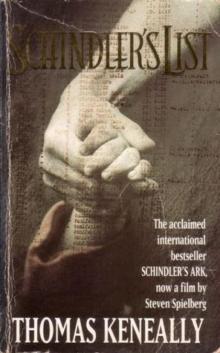 Schindler's List
Schindler's List Bring Larks and Heroes
Bring Larks and Heroes Australians: Flappers to Vietnam
Australians: Flappers to Vietnam The People's Train
The People's Train Crimes of the Father
Crimes of the Father A Family Madness
A Family Madness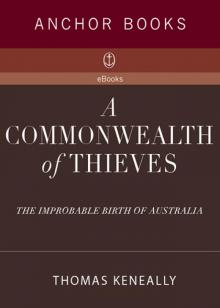 A Commonwealth of Thieves
A Commonwealth of Thieves Ned Kelly and the City of Bees
Ned Kelly and the City of Bees A River Town
A River Town Bettany's Book
Bettany's Book Blood Red, Sister Rose: A Novel of the Maid of Orleans
Blood Red, Sister Rose: A Novel of the Maid of Orleans Victim of the Aurora
Victim of the Aurora American Scoundrel American Scoundrel American Scoundrel
American Scoundrel American Scoundrel American Scoundrel Three Cheers for the Paraclete
Three Cheers for the Paraclete Australians: Origins to Eureka: 1
Australians: Origins to Eureka: 1 The Power Game
The Power Game The Chant Of Jimmie Blacksmith
The Chant Of Jimmie Blacksmith The Daughters of Mars
The Daughters of Mars Searching for Schindler
Searching for Schindler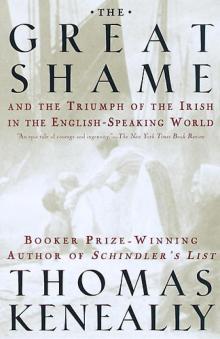 The Great Shame: And the Triumph of the Irish in the English-Speaking World
The Great Shame: And the Triumph of the Irish in the English-Speaking World Abraham Lincoln
Abraham Lincoln The Widow and Her Hero
The Widow and Her Hero Eureka to the Diggers
Eureka to the Diggers Shame and the Captives
Shame and the Captives The Survivor
The Survivor Jacko: The Great Intruder
Jacko: The Great Intruder The Book of Science and Antiquities
The Book of Science and Antiquities Homebush Boy
Homebush Boy The Playmaker
The Playmaker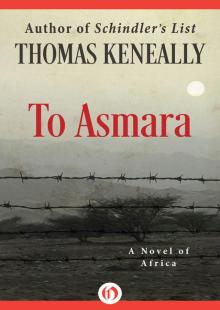 To Asmara: A Novel of Africa
To Asmara: A Novel of Africa A Woman of the Inner Sea
A Woman of the Inner Sea The Tyrant's Novel
The Tyrant's Novel Australians
Australians Schindler's Ark
Schindler's Ark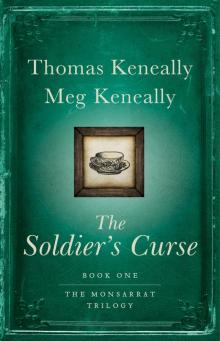 The Soldier's Curse
The Soldier's Curse Australians, Volume 3
Australians, Volume 3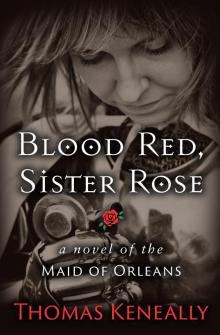 Blood Red, Sister Rose
Blood Red, Sister Rose A Victim of the Aurora
A Victim of the Aurora The Unmourned
The Unmourned Australians, Volume 2
Australians, Volume 2 To Asmara
To Asmara